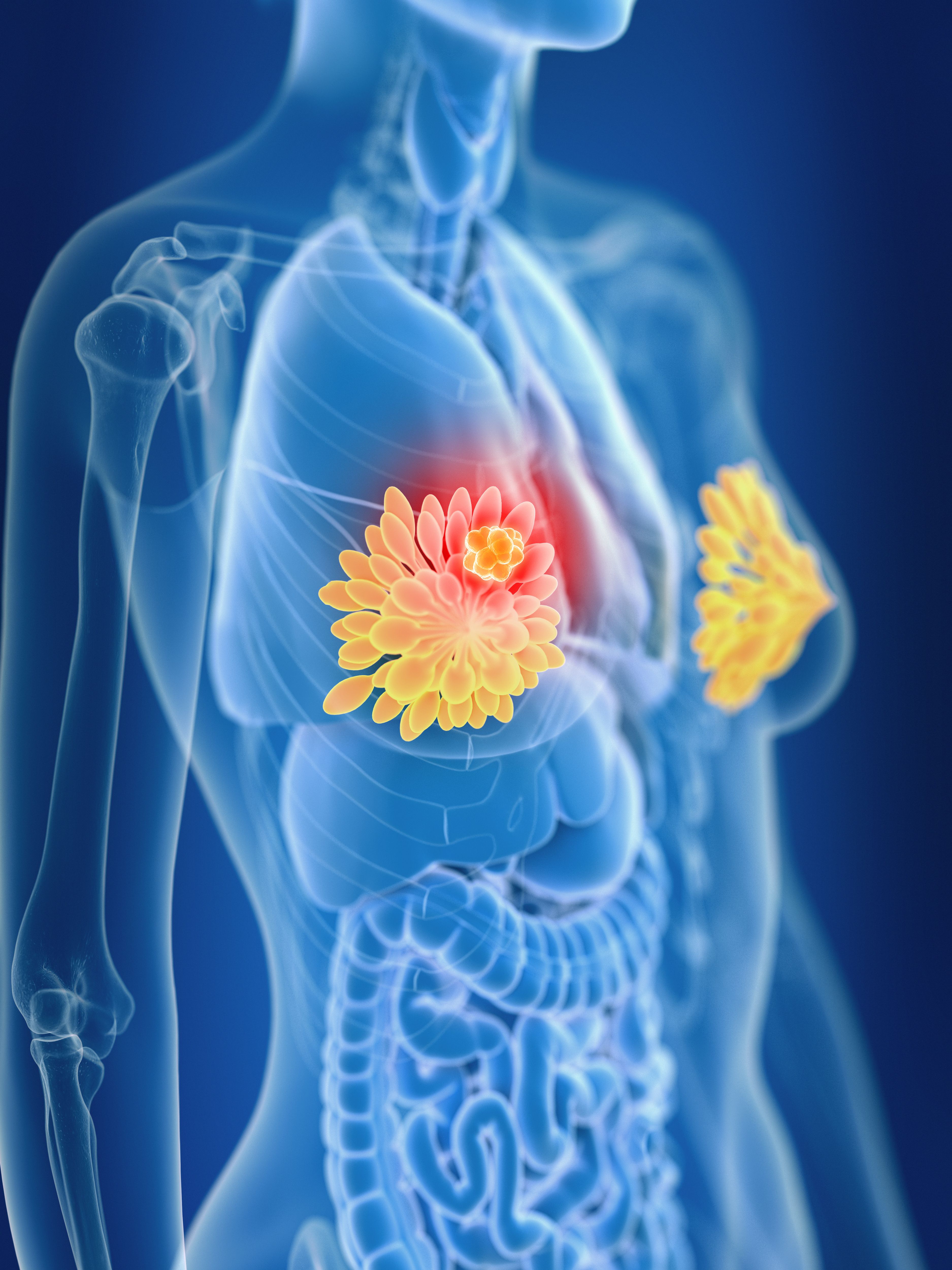Tailored Chemotherapy Doses Lead to Better Outcomes in High-Risk Breast Cancer
The final analysis of the phase 3 PANTHER study confirmed survival benefits for patients receiving dose-dense vs standard chemotherapy.
3D rendered medically accurate illustration of breast cancer: © SciePro - stock.adobe.com

A dose-dense chemotherapy regimen according to hematologic toxicity for the treatment of high-risk, early breast cancer improved recurrence-free survival (RFS), event-free survival (EFS), and distant disease-free survival (DDFS) compared with standard adjuvant chemotherapy, according to end-of-study results from the phase 3 PANTHER trial (NCT00798070).
“To our knowledge, this is the first trial that confirms the benefit of a dose-dense regimen over a control regimen containing docetaxel once every 3 weeks,” authors wrote in the study published in the Journal of Clinical Oncology.
With a median follow-up of 10.3 years (IQR, 9.1-10.5), the HR for RFS, the study’s primary end point, was 0.80 (95% CI, 0.65-0.98; P =.030). The 10-year event rate was 18.6% with the dose-dense regimen vs 22.3%. Further, the HR was 0.78 (95% CI, 0.65-0.94; P =.009) for EFS and 0.79 (95% CI, 0.64-0.98; P =.030) for DDFS. Ten-year event rates were 23.2% vs 27.6%, respectively, for EFS and 17.2% vs 20.9% for DDFS. These improvements were maintained across patient subgroups.
Improvement in overall survival (OS) was not statistically significant (HR, 0.82; 95% CI, 0.65-1.04; P =.109). The 10-year event rate for OS was 15.1% with dose-dense treatment vs 16.6%.
This final analysis did not identify any new safety signals compared with the primary analysis, and there were no reported cases of acute myeloid leukemia or myelodysplastic syndrome since the primary analysis.
About the PANTHER Study
The phase 3, randomized PANTHER trial compared sequential epirubicin/cyclophosphamide and docetaxel given every 2 or 3 weeks. A dose-dense schedule allowed for tailored dosing according to hematologic toxicity. A predefined algorithm determined the basis for the toxicities. A total of 2017 patients were enrolled in the trial, with 2003 comprising the intention-to-treat population.
Patient characteristics were well balanced between arms. The median patient age was 51.1 (range, 23.3-69.2) in the experimental arm vs 50.7 (range, 21.4-68.6) in the standard chemotherapy arm. In the experimental arm, 3.1% of patients had 0 positive nodes, 59.0% had 1 to 3, 26.3% had 4 to 9, and 11.6% had more than 9. In the standard chemotherapy arm, these were 3.0%, 55.4%, 28.9%, and 12.7%, respectively. Further, 80.4% of patients in the experimental arm were estrogen receptor- or progesterone receptor-positive vs 79.3% in the standard chemotherapy arm, and 16.0% and 18.2%, respectively, were HER2-positive.